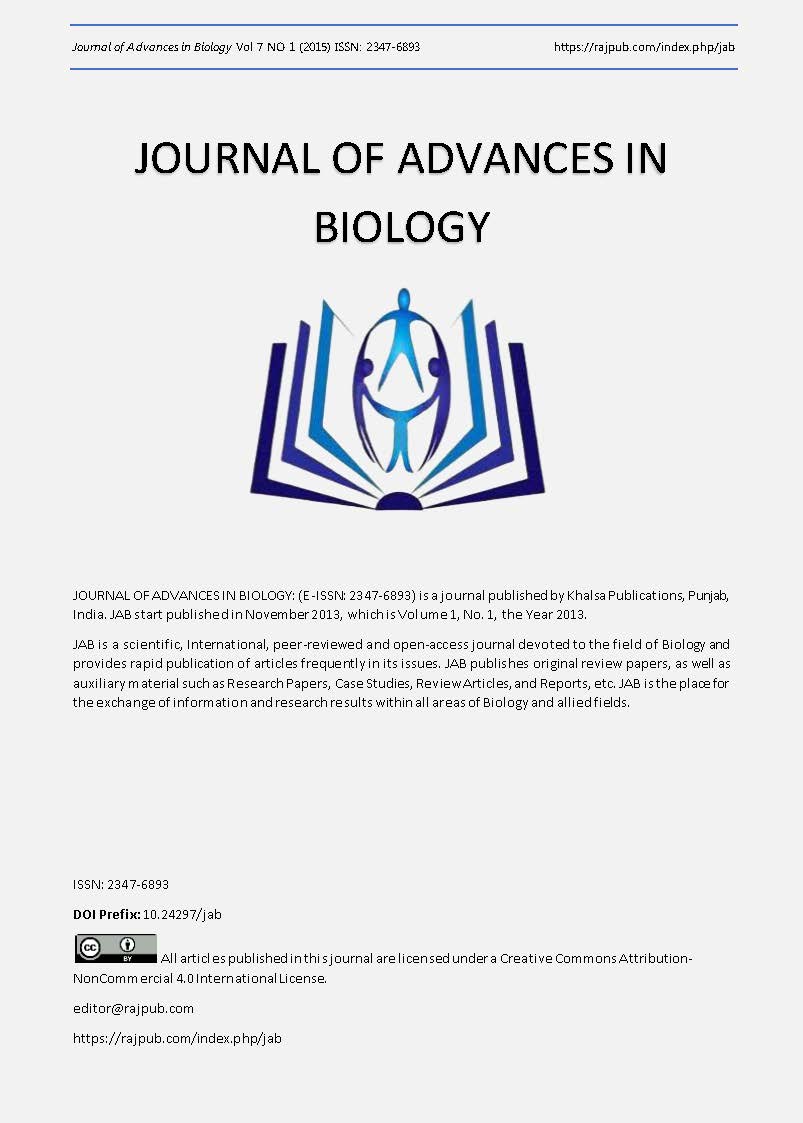The ground beetle Blaps polycresta ( Coleoptera:tenebrionidae) as Bioindicator of Heavy metals Soil Pollution.
DOI:
https://doi.org/10.24297/jab.v7i1.4862Keywords:
Heavy metals, soil pollution, bioaccumulation, biomarkers, oxidative stress, Blaps polycresta, cadmium, Antioxidant enzymesAbstract
Human activities can have dramatic impacts on animal populations around urban areas with heavy metal contamination being a primary cause of hazardous effects. Insects as residents of ecosystems are especially susceptible to heavy metal contamination and have the potential to serve as indicators for environmental stresses .To better understand the effect of heavy metals pollution on terrestrial insect, the detection of different heavy metals was investigated. The following metals cadmium (Cd), copper (Cu), zinc (Zn) and lead (Pb) were found and their concentrations were estimated in soil samples from either polluted or reference site. As the Cd concentration was significantly high in the polluted site, its concentration in the tissues of the studied insect Blaps polycresta (Coleoptera: tenebrionidae), was investigated as well as the antioxidant defense system and lipid peroxidation biomarkers. The results of insect's tissues in polluted site showed a significant decrease in the activity of antioxidant enzymes, glutathione S-transferase (GST), superoxide dismutase (SOD), catalase (CAT), and reduction in the level of glutathione (GSH). In addition, there was a significant decrease in the total protein content. On the other hand a significant increase of transaminases (AST, ALT), and lipid peroxidation (LPO) levels was found. In conclusion, insect can be considered as a good bioindicator species for environmental heavy metals pollution especially by cadmium that accumulates in soft tissues and has deleterious effects.
Downloads
Downloads
Published
How to Cite
Issue
Section
License
 All articles published in Journal of Advances in Linguistics are licensed under a Creative Commons Attribution 4.0 International License.
All articles published in Journal of Advances in Linguistics are licensed under a Creative Commons Attribution 4.0 International License.




